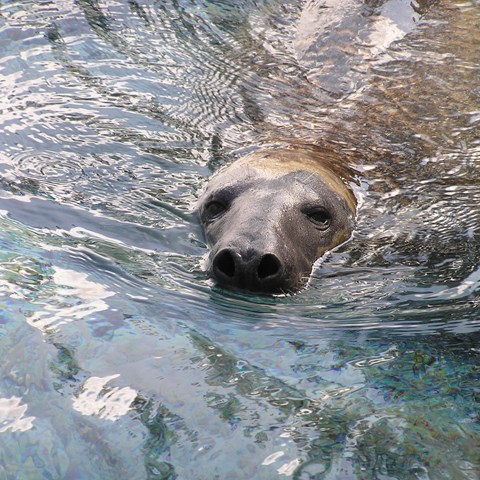Coastal fishermen and managers have long argued that the large harvest of herring from industrial trawlers in the Baltic Sea can force species such as grey seals and cormorants to move closer to the coast in search of food other than herring. This has never been investigated with scientific methodology before – but will now be done within the framework of Agnes Olin's project. If seals and cormorants eat more of the coastal predatory fish, it can have effects on the entire coastal ecosystem – for example, the amount of filamentous algae can increase and thus amplify the symptoms of eutrophication.
– The plan in the project is to look at whether mainly grey seals, but also cormorants, seek further into the archipelago in search of food. This is a pattern that many fishermen think they have seen, but it has never been studied scientifically, says Agnes.
Baltic herring is the grey seal's favourite food
Since the grey seal has herring as its favorite food in the Baltic Sea, Agnes will look at whether a possible spread into the archipelago is due to the reduced availability of large herring – a decrease that is probably largely driven by the large-scale trawling in the open sea.
– It will be difficult to come up with a definitive answer, but with the help of data on, among other things, the seal's blubber thickness and diet, as well as the herring's population development and distribution, we can at least begin to dig into this issue, Agnes continues.
Harder predation pressure can trigger a "trophic cascade"
Since seals and cormorants can eat a lot of perch and pike when they search for food further into the archipelago, the plan is to look at how this can affect the rest of the coastal ecosystem.
– There is previous research that indicates that a higher predation pressure on pike and perch can trigger a so-called trophic cascade, where a higher predation pressure leads to fewer predatory fish, which in turn leads to an increase in one of their prey – the stickleback. The increased amount of sticklebacks in turn increases the predation pressure on small grazers such as amphipods, which play an important role in grazing on the filamentous algae that otherwise deteriorate habitat and water quality. Increased predation by seals and cormorants could in theory have major effects on the coastal ecosystem, and this is something we will be looking at, Agnes explains.
Data from several different environmental monitoring programmes will be used
All work within the project will be based on data already collected from several different environmental monitoring programs. In addition, Agnes will use seal and cormorant observations that the public has reported in Artportalen.
– These datasets are incredibly valuable as we can track changes over time. When we then combine them, as in this project, we can look at questions that cannot be answered with the help of individual field studies or experiments, says Agnes.
The project will start in February 2024 and run for two years.
– I think this particular area of field is really exciting! By looking at the population development of seals and cormorants and their impact on other species, the hope is to find new angles on how we should manage the Baltic herring so that its important role in the ecosystem is maintained, Agnes concludes.
